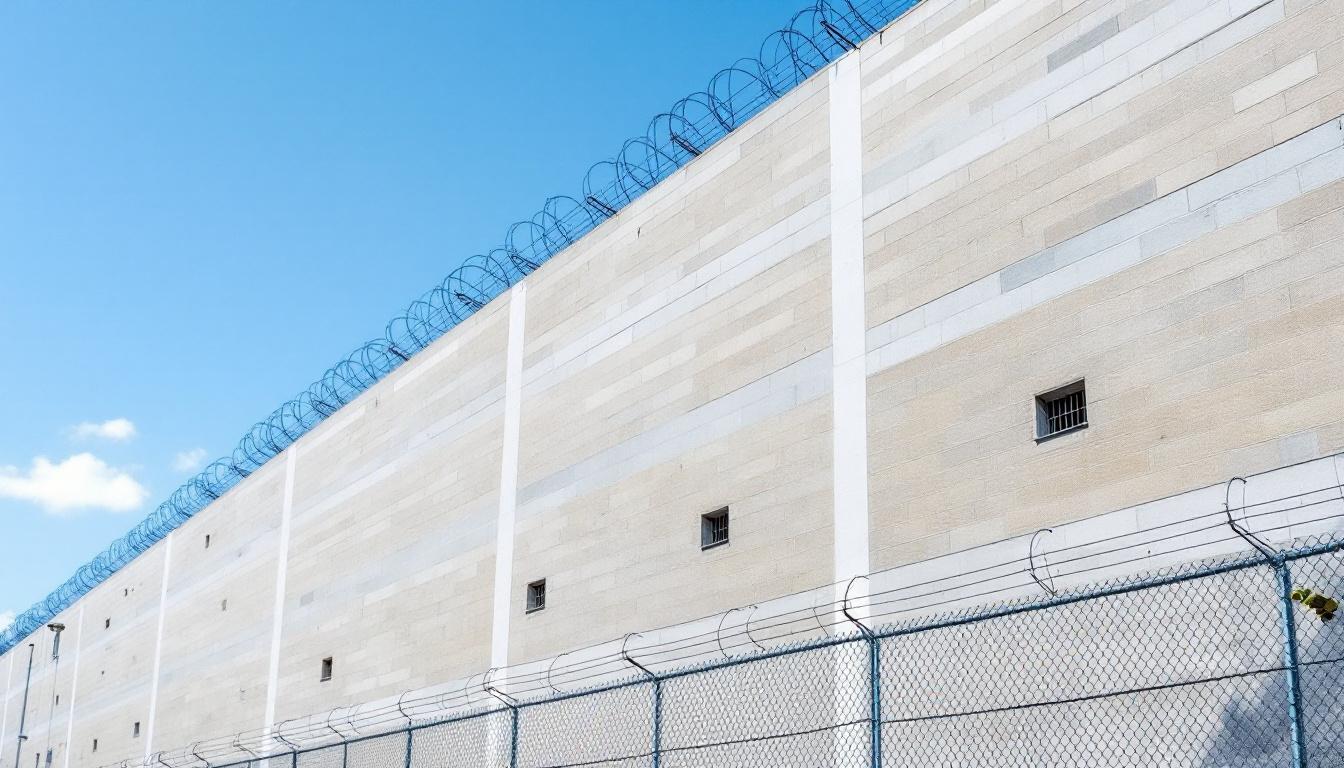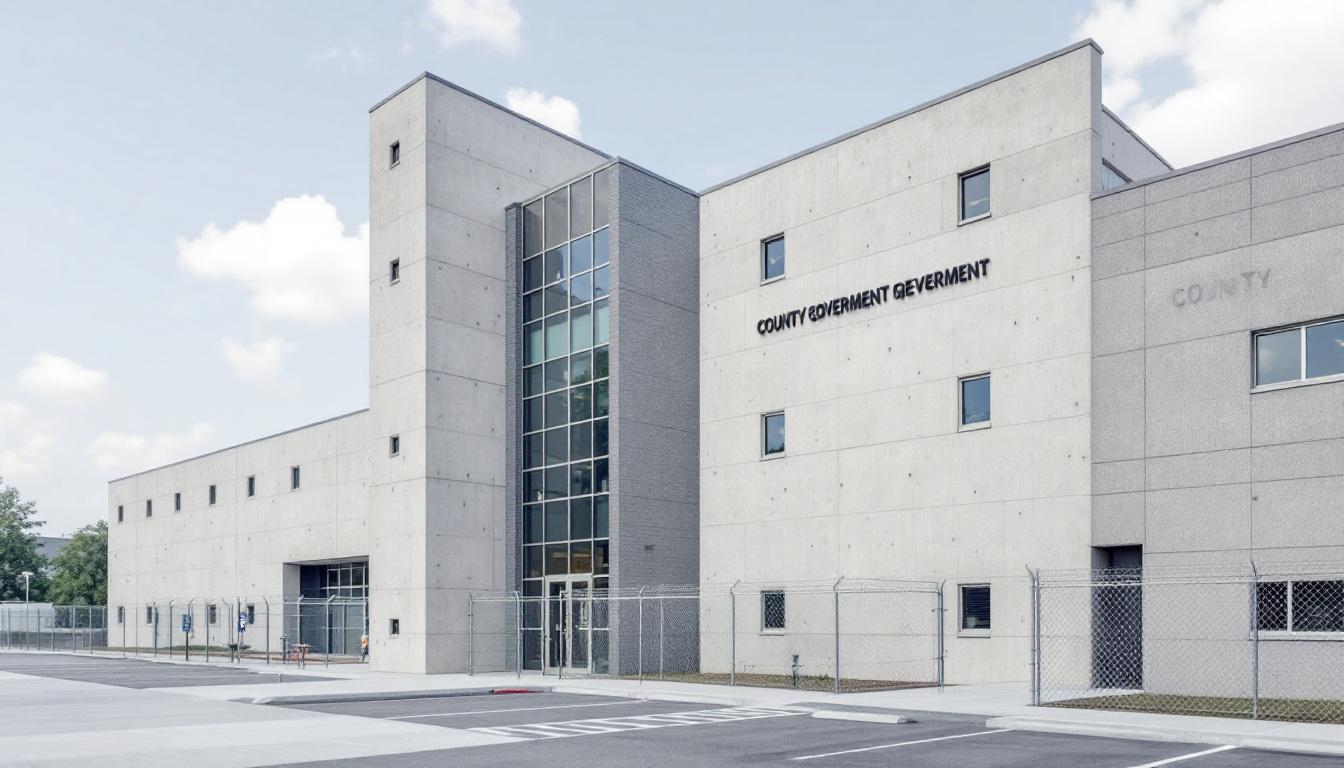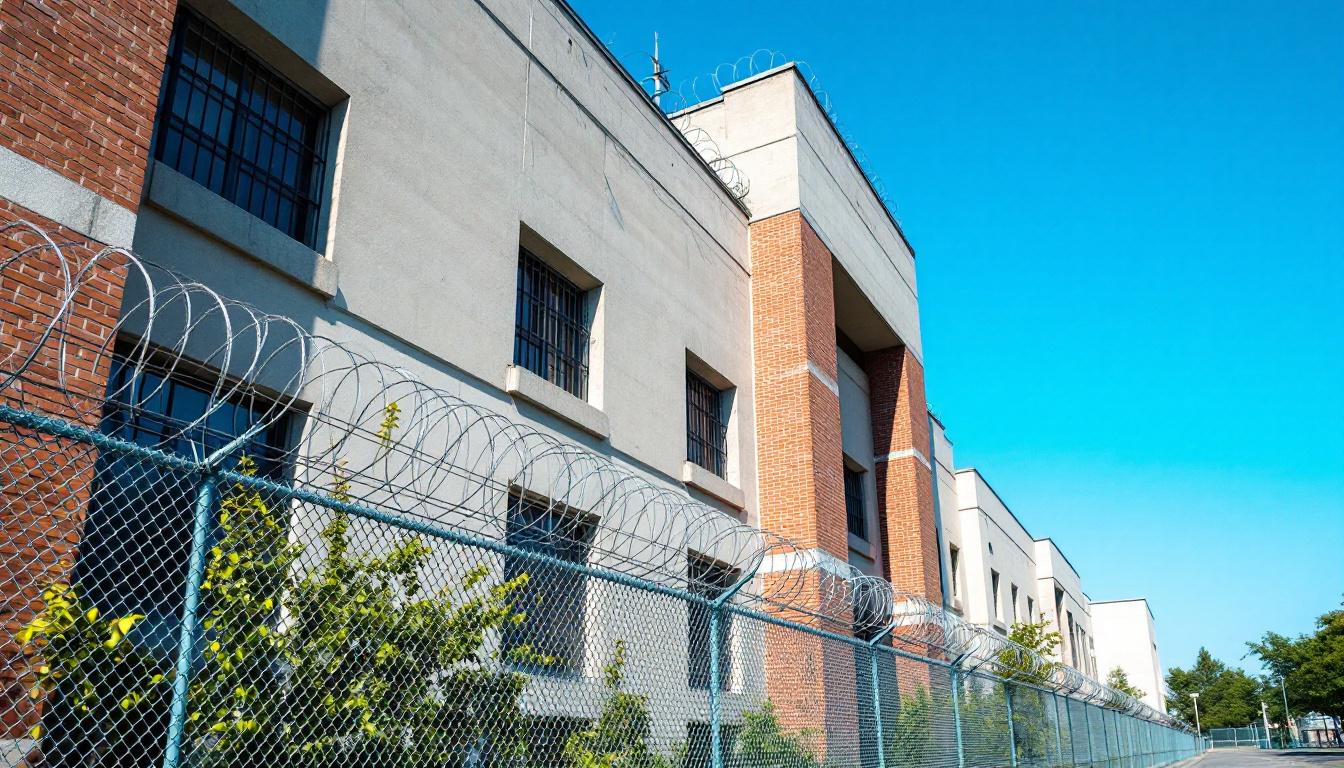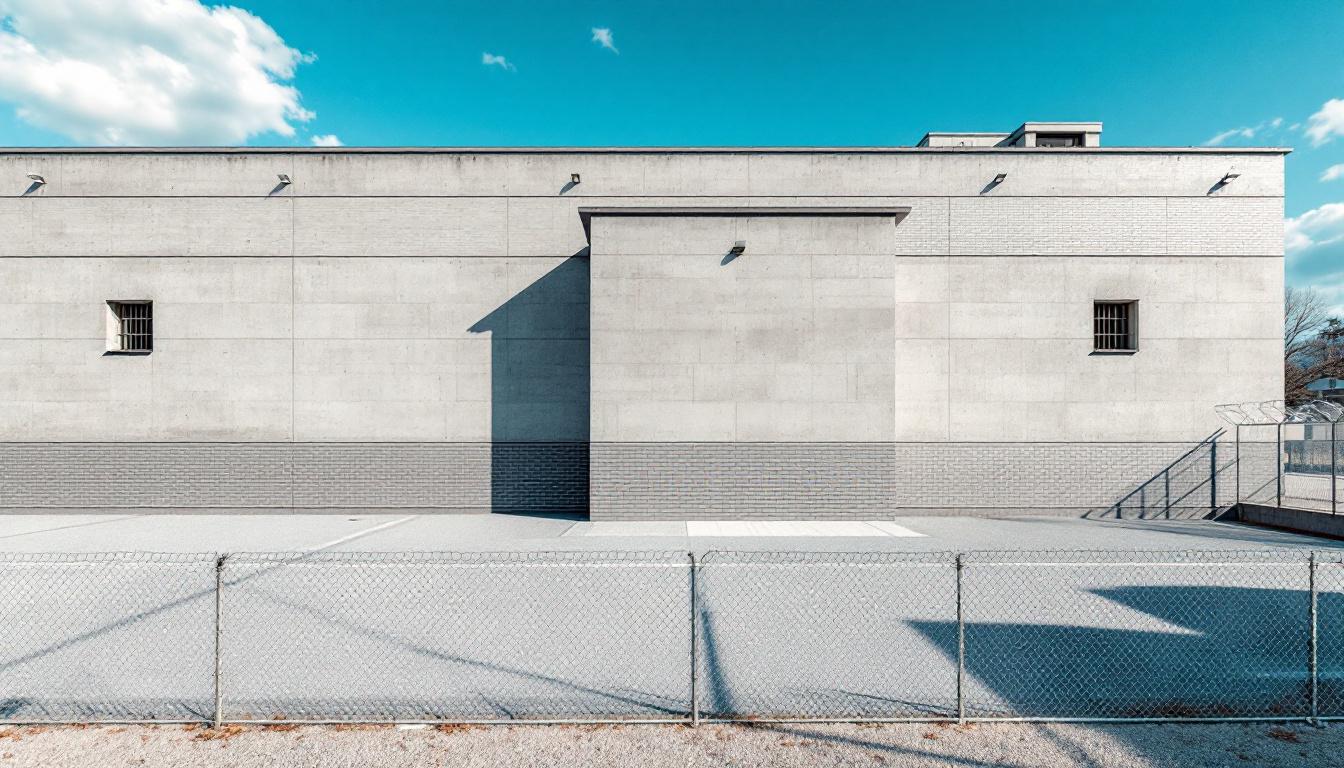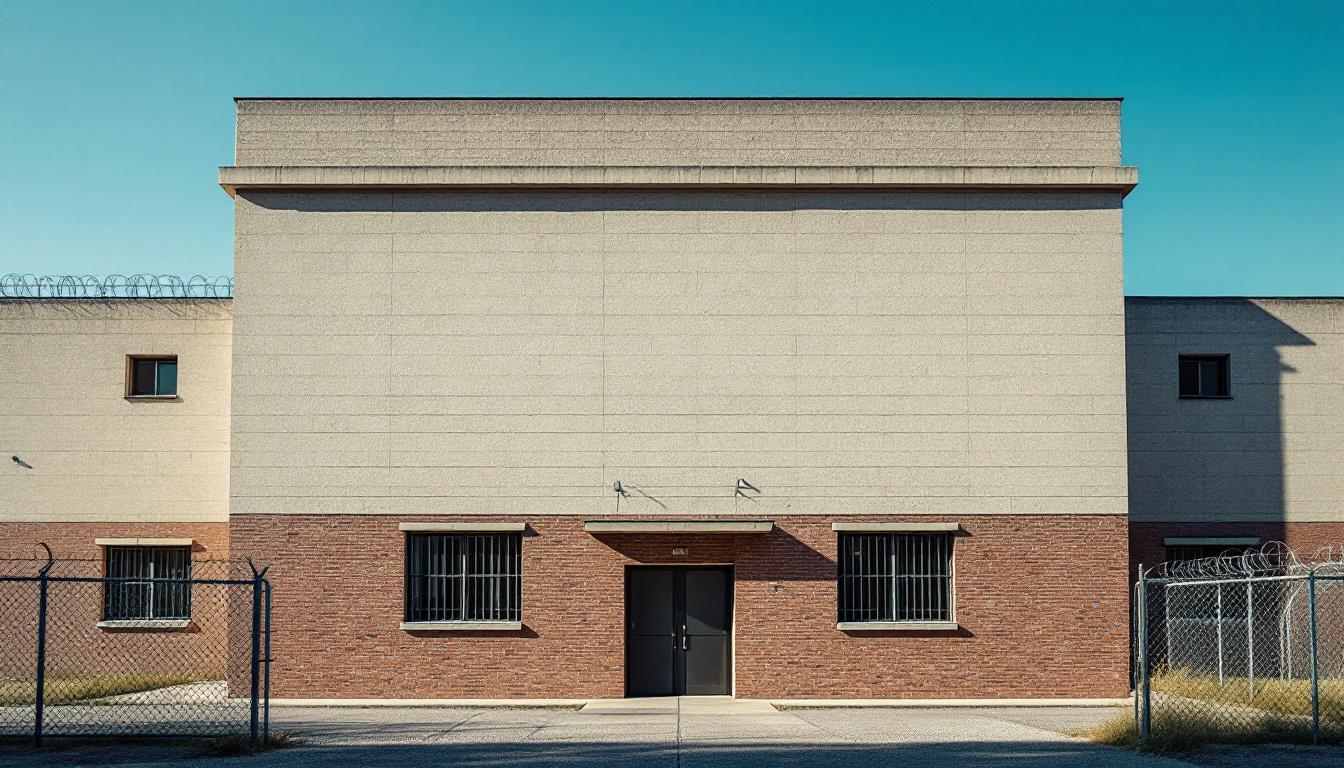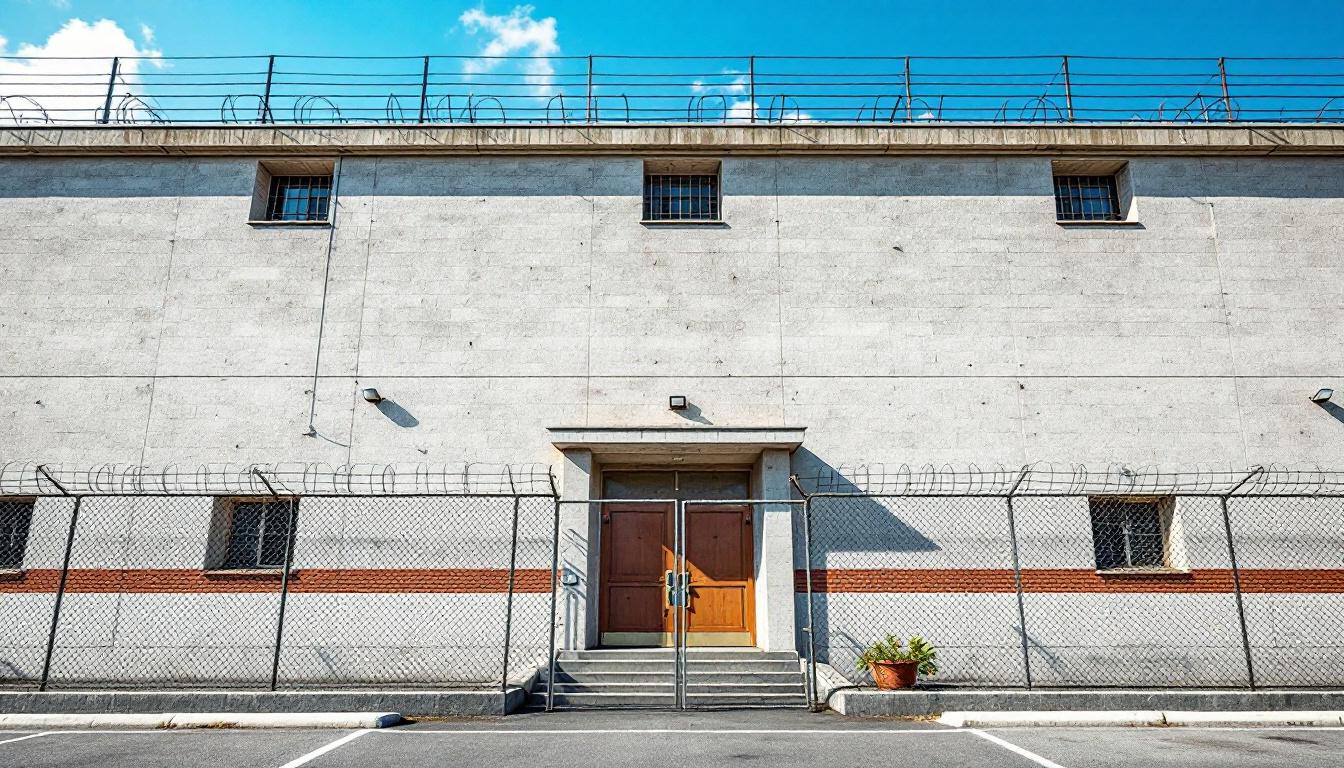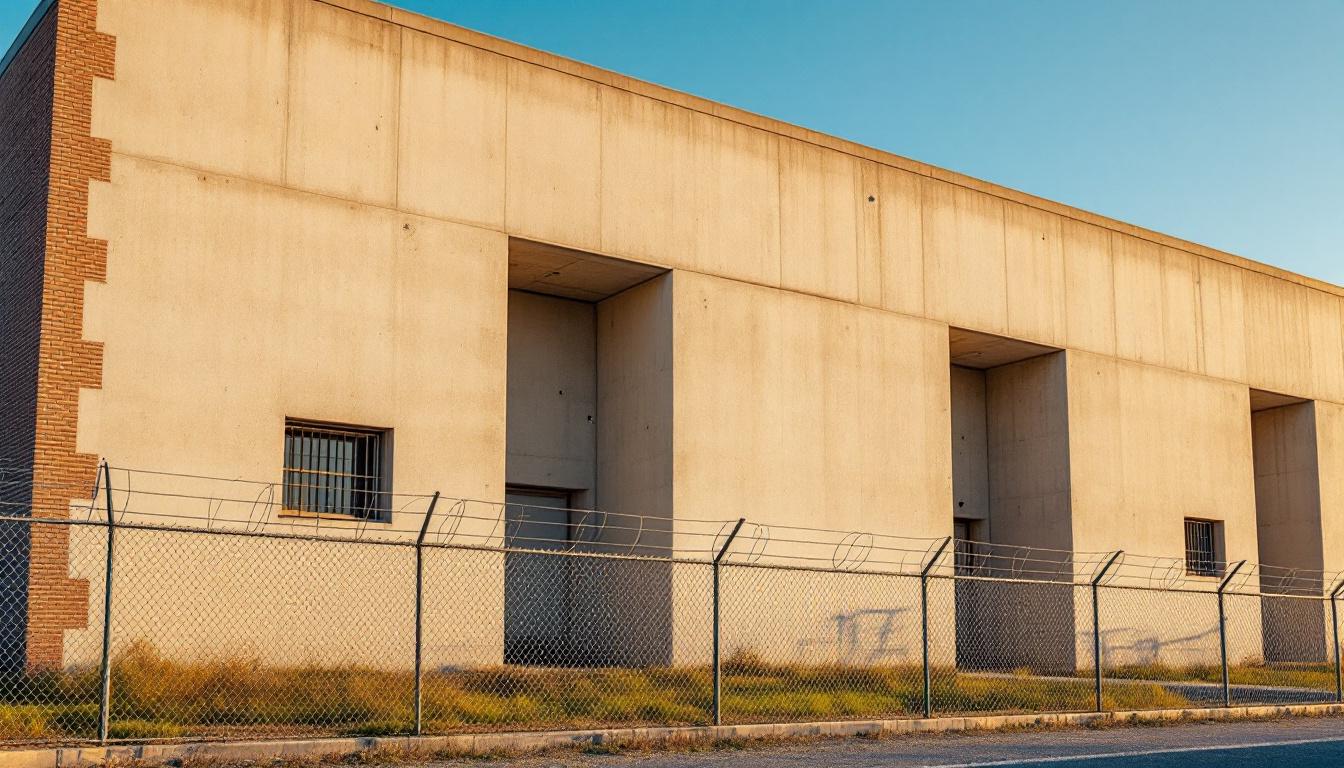
Quick Navigation
How to contact an inmate at TDCJ Ernestine Glossbrenner SAFPF Unit
This comprehensive guide will walk you through how to connect with an inmate at TDCJ Ernestine Glossbrenner SAFPF Unit. Follow the steps below to find an inmate and send letters and photos:
- Search for the inmate using our search tool below
- Create your account or log in to Penmate
- Write your message (up to 6,000 characters)
- Send instantly - inmates receive printed copies daily
Find an Inmate
Search for an inmate to start communicating today
Tip: You can search by first name, last name, or inmate ID number
To contact a person at TDCJ Ernestine Glossbrenner SAFPF Unit start by searching for the person on the official facility website. Perform a search by following these steps:
- Step 1: Enter their first name and last name into the search form and click "Search"
- Step 2: Locate their inmate record
- Step 3: Write down their Inmate ID and any housing information provided
Important! Be sure to enter the person's full name. Nicknames should not be used.
How to Send Messages to Inmates

You can use your phone or computer to send emails, letters, and photos to an inmate. Messages are sent electronically to inmate tablets or kiosks at the facility. If you would like to send a message, start by searching for an inmate at TDCJ Ernestine Glossbrenner SAFPF Unit.
Sending Photos and Postcards

A great way to send love and support to a loved one at TDCJ Ernestine Glossbrenner SAFPF Unit is to send photos and postcards. It only takes a few minutes to send photos from your phone and it makes a huge difference. You can also mail postcards with words of support and inspiration, or design your own postcard for special moments like birthdays and holidays.
Important! Be sure not to send any explicit photos or they may not be approved by the facility. You can also use a photo printing app like Penmate to make sure your photos are printed at the correct size (4x6 or 3x5) and are mailed according to the rules and regulations of TDCJ Ernestine Glossbrenner SAFPF Unit.
Frequently asked questions about TDCJ Ernestine Glossbrenner SAFPF Unit
-
How long does it take to deliver a message?
If you're sending an email message your letter is usually delivered within 24-48 hours. For messages sent via mail you should expect delivery within 3-7 days. All messages will need be approved by TDCJ Ernestine Glossbrenner SAFPF Unit.
-
How much does it cost to send a message to TDCJ Ernestine Glossbrenner SAFPF Unit?
You can send a message free using your phone or mail a message via USPS for the price of a $0.60 stamp and envelope. You can also purchase credits or e-stamps from services starting at $1.99.
-
What services can I use to contact an inmate at TDCJ Ernestine Glossbrenner SAFPF Unit?
Penmate
You can use Penmate to send letters and photos to an inmate from your phone. It's an easy way to stay in touch during your loved one's incarceration. Use the inmate locator to find an inmate's location and contact information, then you can send messages within a few minutes.
Securus messaging
Securus may be another option for communicating with an inmate at TDCJ Ernestine Glossbrenner SAFPF Unit. You can create a friends and family account and purchase credits to send messages. All messages will be reviewed and must be approved by the facility.
JPay
Some county jails and state prisons may support sending messages with JPay. You must register an account with the system, find your loved one, and purchase stamps to send messages. For some locations you can also attach photos.
Smart Jail Mail
You may also check if Smart Jail Mail is available at TDCJ Ernestine Glossbrenner SAFPF Unit. Smart Jail Mail is operated by Smart Communications and has contracted with some state and county jails. After purchasing credits, your messages and photos are sent to the facility, printed out, and then handed out to your loved one.
-
What is the mailing address of TDCJ Ernestine Glossbrenner SAFPF Unit?
Mailing address:
TDCJ Ernestine Glossbrenner SAFPF Unit
5100 FM1329
San Diego, TX 78384
Phone: (361) 279-2705Business hours:
- Monday: 8:00 AM – 5:00 PM
- Tuesday: 8:00 AM – 5:00 PM
- Wednesday: 8:00 AM – 5:00 PM
- Thursday: 8:00 AM – 5:00 PM
- Friday: 8:00 AM – 5:00 PM
- Saturday: Closed
- Sunday: Closed
-
What are the visiting hours at TDCJ Ernestine Glossbrenner SAFPF Unit?
Visiting hours at TDCJ Ernestine Glossbrenner SAFPF Unit vary by housing unit and security level. Generally, visits are scheduled on weekends and holidays, with some facilities offering weekday visits. Contact the facility directly at (361) 279-2705 or check their website for the current visiting schedule. Visits typically last 30-60 minutes and must be scheduled in advance.
-
What items are prohibited when sending mail to TDCJ Ernestine Glossbrenner SAFPF Unit?
Prohibited items typically include: cash, personal checks, stamps, stickers, glitter, glue, tape, staples, paperclips, polaroid photos, musical or blank greeting cards, hardcover books, magazines with staples, and any items containing metal or electronics. Only send letters on plain white paper with blue or black ink. Photos must be printed on regular photo paper (no Polaroids). Always check with TDCJ Ernestine Glossbrenner SAFPF Unit for their specific mail policies.
-
How do I send money to an inmate at TDCJ Ernestine Glossbrenner SAFPF Unit?
You can send money to an inmate at TDCJ Ernestine Glossbrenner SAFPF Unit through several methods: 1) Online using JPay, Access Corrections, or the facility's approved vendor, 2) Money orders mailed directly to the facility with the inmate's name and ID number, 3) Kiosks located in the facility lobby, or 4) Over the phone using a credit or debit card. Fees vary by method, typically ranging from $2.95 to $11.95 per transaction.
-
Can I schedule a video visit with an inmate at TDCJ Ernestine Glossbrenner SAFPF Unit?
Many facilities now offer video visitation as an alternative to in-person visits. At TDCJ Ernestine Glossbrenner SAFPF Unit, video visits may be available through services like Penmate, Securus Video Connect, GTL, or ICSolutions. Video visits typically cost $10-20 for 20-30 minutes and must be scheduled in advance. You'll need a computer or smartphone with a camera and reliable internet connection. Contact the facility for their specific video visitation policies and approved vendors.
-
What identification do I need to visit an inmate at TDCJ Ernestine Glossbrenner SAFPF Unit?
All visitors must present valid government-issued photo identification such as a driver's license, state ID, passport, or military ID. Minors must be accompanied by a parent or legal guardian who can provide the minor's birth certificate. Some facilities require visitors to be on the inmate's approved visitation list, which may require a background check. Contact TDCJ Ernestine Glossbrenner SAFPF Unit for specific ID requirements and visitor approval procedures.
-
How can I find out an inmate's release date?
To find an inmate's release date at TDCJ Ernestine Glossbrenner SAFPF Unit, you can: 1) Use the online inmate search tool if available, 2) Call the facility's records department, 3) Contact the inmate's case manager or counselor, or 4) Have the inmate provide this information during a call or visit. For privacy reasons, some facilities only release this information to immediate family members.
Facility Overview
Contact Information
TDCJ Ernestine Glossbrenner SAFPF Unit5100 FM1329
San Diego, TX 78384
Phone: (361) 279-2705
Official Website
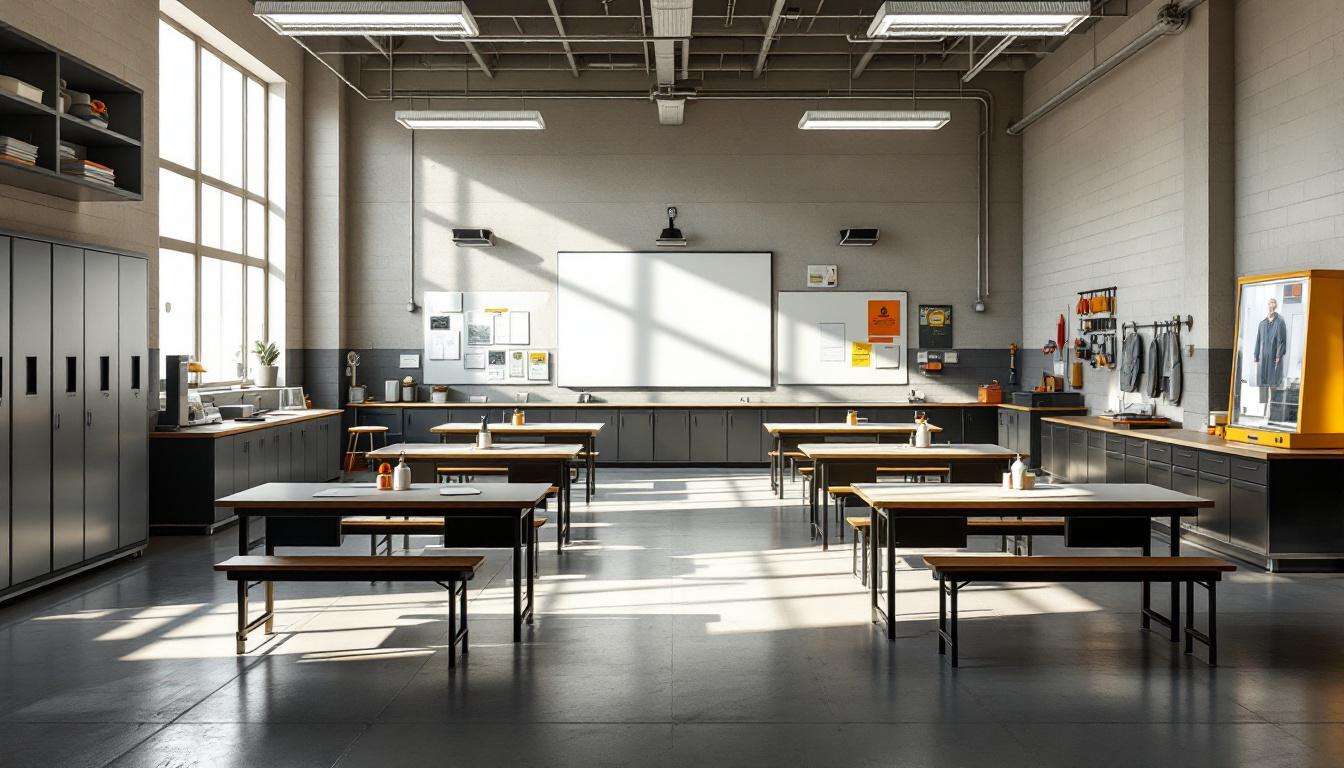
About TDCJ Ernestine Glossbrenner SAFPF Unit
Nestled within Nashville's broader metropolitan area, the Glossbrenner Unit, TX serves as a significant component of Tennessee's correctional infrastructure, operating with a comprehensive approach to offender management that emphasizes structured rehabilitation and community reintegration preparation. This TN correctional facility typically maintains operational standards that reflect the state's commitment to balancing security requirements with meaningful programming opportunities for those in its care.
The facility's operational philosophy generally centers on providing residents services that address multiple aspects of successful reentry planning, including educational advancement opportunities, vocational skill development, and behavioral intervention programs. Staff members often work to create an environment where individuals can participate in structured daily routines that may include academic coursework, job training workshops, and counseling sessions designed to address underlying factors that contribute to criminal behavior. The correctional facility typically offers various support services that help residents develop practical life skills, from financial literacy to conflict resolution techniques.
Within Nashville's correctional landscape, the Glossbrenner Unit generally functions as part of a broader network designed to serve different security levels and rehabilitation needs throughout the region. The facility's approach to offender management often incorporates evidence-based practices that focus on reducing recidivism through targeted interventions and comprehensive discharge planning. Residents may have access to library services, recreational activities, and faith-based programming, while family visitation policies typically aim to maintain important community connections that support successful reintegration outcomes upon release.
Programs & Services
Educational advancement serves as the cornerstone of rehabilitation initiatives at Glossbrenner Unit, where residents typically engage in comprehensive learning opportunities designed to address fundamental academic deficiencies while building practical skills for successful reintegration. The facility's approach emphasizes holistic development, recognizing that meaningful change often requires addressing multiple aspects of an individual's personal and professional preparedness. Through carefully structured programming, residents may access various pathways that foster both intellectual growth and practical competency development.
Academic initiatives at the facility often include high school diploma completion programs that allow residents to address educational gaps while incarcerated. These education services typically incorporate individualized learning plans that accommodate diverse academic backgrounds and learning styles. Moreover, vocational programs may deliver hands-on training in various trades and technical skills, providing residents with marketable competencies upon release. Employment readiness initiatives often complement these educational efforts by focusing on job search strategies, interview preparation, and workplace communication skills that enhance residents' prospects for sustainable employment.
Support services extend beyond traditional academic offerings to encompass faith-based programs that may provide spiritual guidance and community connection for interested residents. Music programs typically offer creative outlets that can serve therapeutic purposes while developing artistic skills and self-expression capabilities. Life coaching initiatives often deliver personalized guidance that helps residents develop goal-setting abilities, decision-making skills, and strategies for managing the challenges of reentry. These comprehensive support mechanisms work collectively to address the multifaceted needs of the resident population, creating opportunities for personal transformation and community reintegration.
Daily Life & Visitation
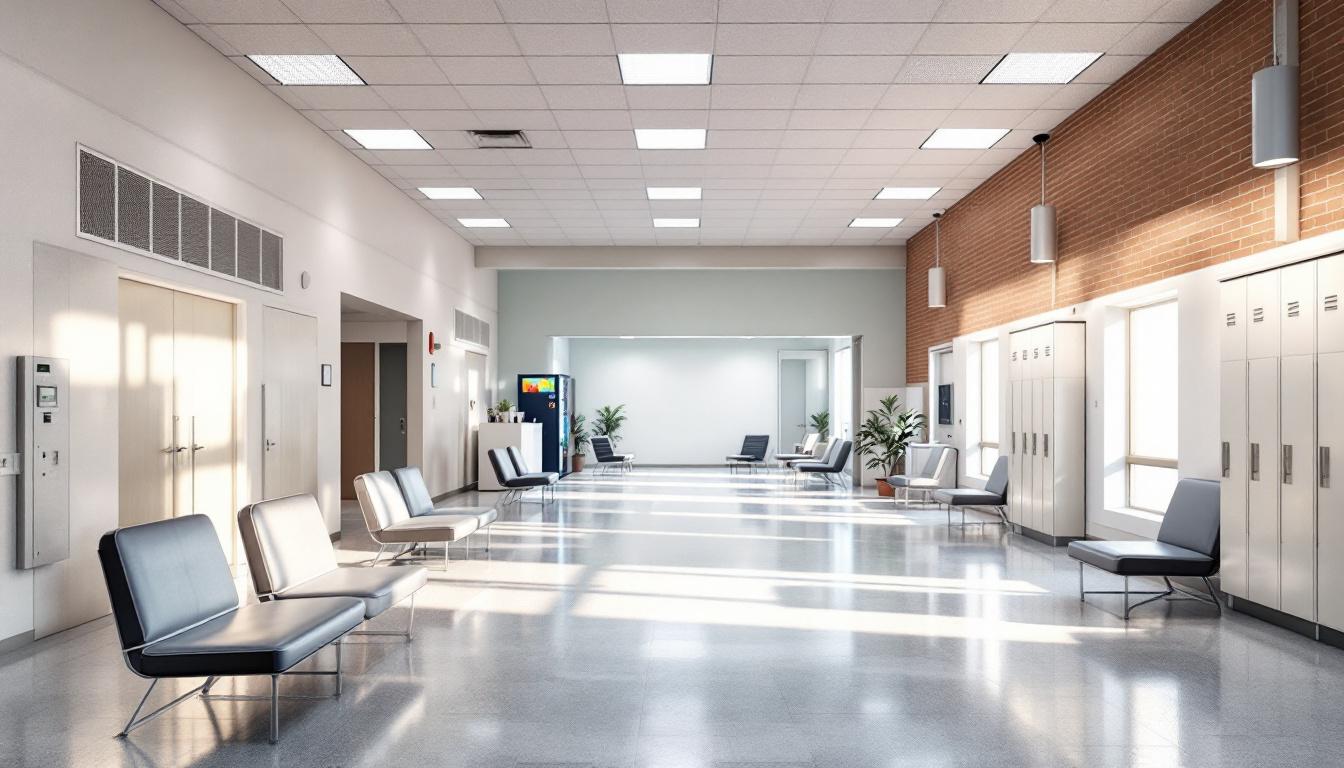
The steady rhythm of count times and scheduled activities forms the backbone of each day, providing residents with a predictable framework that many find reassuring after periods of uncertainty. Today begins consistently with early morning wake-up calls, followed by organized movement to dining areas where meals are served at regular intervals throughout the day. This structured approach typically includes designated times for work assignments, educational programming, and recreational activities, creating a routine that residents can rely upon as they navigate their time at the facility.
Living accommodations at Glossbrenner Unit generally consist of housing units designed to accommodate multiple residents, with shared common areas and individual sleeping spaces that allow for both social interaction and personal privacy. Moreover, residents typically have access to basic personal property storage and may utilize commissary services to purchase approved items that enhance their daily comfort. The dining arrangements usually involve communal meals served in designated areas, where residents gather at scheduled times to receive nutritionally planned meals that meet dietary requirements and accommodate various health needs.
Recreational opportunities often deliver both physical exercise and social engagement through activities such as outdoor recreation time, indoor fitness options, and organized sports when available. Whereas the structured programming schedules may include educational classes, vocational training, and counseling sessions designed to support personal development and preparation for eventual reintegration. Family connections remain vital through visitation policies that typically allow scheduled visits with approved family members and friends, while communication options generally include monitored phone calls and correspondence that help residents maintain important relationships with their support systems outside the facility.
Ready to Connect?
Start communicating with your loved one today
Search for an Inmate
